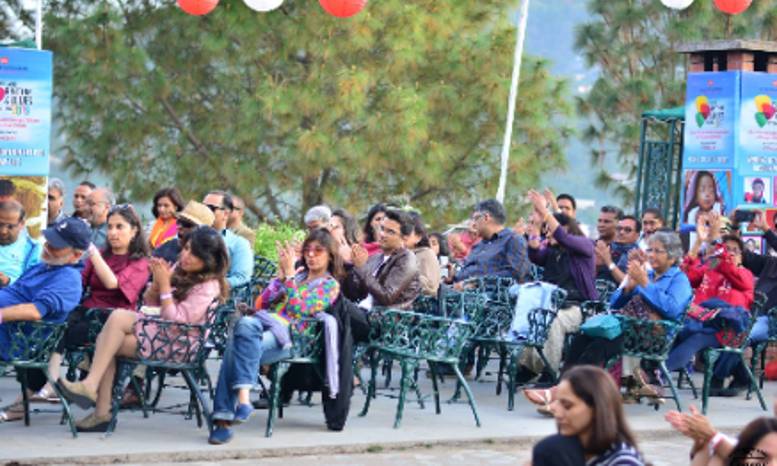Raising Awareness for Congenital Heart Defects
July 12, 2024 | Contributed by Virang Desai
As a child heart foundation, the goal for Genesis Foundation is to ensure that proper treatment and care is provided to underserved families with children facing a congenital heart defect (CHD). To understand the scope of CHD, it’s crucial to list the overarching barriers to proper treatment that are present: geographical challenges in pediatric cardiac center distribution, complexities and intricacies of CHD pathology, poverty and most prevalent of all, lack of awareness.
 Lack of awareness regarding congenital heart defects can be detrimental to access of timely treatment
Lack of awareness regarding congenital heart defects can be detrimental to access of timely treatment
The Barriers to Treatment of Congenital Heart Defects
In India, the population itself warrants the need for many folds of resources and funding for healthcare than most other countries. This is unfortunately not the case as the numbers convey that a single cardiac center in North America treats 120,000 patients whereas a single cardiac center in Asia treats 16 million patients not to mention the surgeon-to-patient ratio similarity exceeding in statistics when comparing Asia to North America (or Europe) [1].
Geographically speaking, an inverse relationship presents itself when considering burden of CHD cases and cardiac care centers: higher burdens of CHD cases are in regions of India where cardiac care centers are less in number including but not limited to Northeastern states including Uttar Pradesh, Bihar, Jharkhand, and Madhya Pradesh [1]. Other issues arise alongside limited access to cardiac care centers including long and suboptimal transportation conditions for children with CHD, an additive to further potential complications that may arise.
The presence of these regional disparities can be attributed to many elements including lack of healthcare funding, but with proper education and awareness at the level of the lay person and at the federal level, the aforementioned issues can be aptly mitigated. Furthermore, lack of awareness on the federal and healthcare level can be detrimental as CHD presence can be subtle and therefore overseen, adding another barrier to the understanding and treatment of CHD. Frontline healthcare providers may only be aware of a hole in heart by birth whereas CHDs can be many more types. In many developed countries, screening before, during, and after pregnancy has become a staple, allowing for the timely and efficient treatment for CHD. However, in low-middle-income countries, diagnosis before and after birth is not just limited but unexplored. Due to the lack of awareness in prenatal care when considering CHD, problems like delayed diagnosis can arise including leading to pre-operative mortality.
 The Kasauli Rhythm and Blues Festival is a flagship event of Genesis Foundation that helps in raising awareness about CHD in India
The Kasauli Rhythm and Blues Festival is a flagship event of Genesis Foundation that helps in raising awareness about CHD in India
If designated government officials are educated with the proper resources and given perspective towards the gravity of CHD, they can support the work Genesis Foundation does through widespread education and support throughout India, ideally embedding basic principles of education within public health policies. On the level of physicians and surgeons, awareness is equally crucial as the early signs and symptoms of CHD may not be identifiable and can be easily overlooked. Ensuring that proper and extensive resources are spread to physicians and surgeons alike alongside adequate (prenatal) screening will ensure that CHD is combatted early and effectively as a delayed diagnosis can play a significant toll on the exacerbation of CHD. Specifically, “prenatal diagnosis and peri-partum care of neonates with critical CHD” can serve as a solution to tackling CHD at the root [2]. This can be accomplished as awareness for CHD and its implications are prioritized, more people are dedicated to supporting the cause, and more resources are acquired in solving these issues.
Raising Awareness about Congenital Heart Defects – Some Initiatives of Genesis Foundation
In regard to the previous issues, awareness is crucial, but it doesn’t have to simply mean individually meeting government officials and healthcare professionals to advocate; it can include a variety of different methods including fundraising. For example, The Kasauli Rhythm and Blues Festival, a flagship musical fundraiser of Genesis Foundation whereby the talent of a diverse variety of musicians are displayed and also help spread awareness about congenital heart defects among a large number of people. The same is true for events the Foundation organizes like the multi-faceted Shillong Chamber Choir which supports children with CHD through donations.
 Genesis Foundation undertakes several activities to build awareness about congenital heart defects
Genesis Foundation undertakes several activities to build awareness about congenital heart defects
However, the financial barriers are not the only alleviated obstacle through these initiatives. As a child heart foundation, the mission of Genesis Foundation to Save Little Hearts is highlighted, and the participants supporting the cause are aware of the comprehensive purpose, additionally advancing awareness of CHD. Providing easily accessible resources for supporters is also another manner in which everyone can be educated on CHD which includes digestible articles, infographics, and stories. This ensures that anyone who desires to know more about CHD is informed and can contribute to the cause; this is with the end goal that as many people as possible are made aware of CHD, especially in rural areas so that adequate care and treatment can be given to those areas.
All in all, awareness can be as simple as giving a small lecture to a group of individuals regarding the signs and symptoms of a hole in heart by birth and other types of CHD but can also include educating a group of government officials to include required CHD screening and informatics into health policies. The significance of awareness is rooted in the people, and the more people are made aware of CHD, the more we can work as a society towards combating the socioeconomic and geographic struggles when it comes to combating the disease and make healthcare more accessible and affordable for all.
Sources:
[1] https://www.indianpediatrics.net/dec2018/1075.pdf
[2] https://pubmed.ncbi.nlm.nih.gov/31679551/

